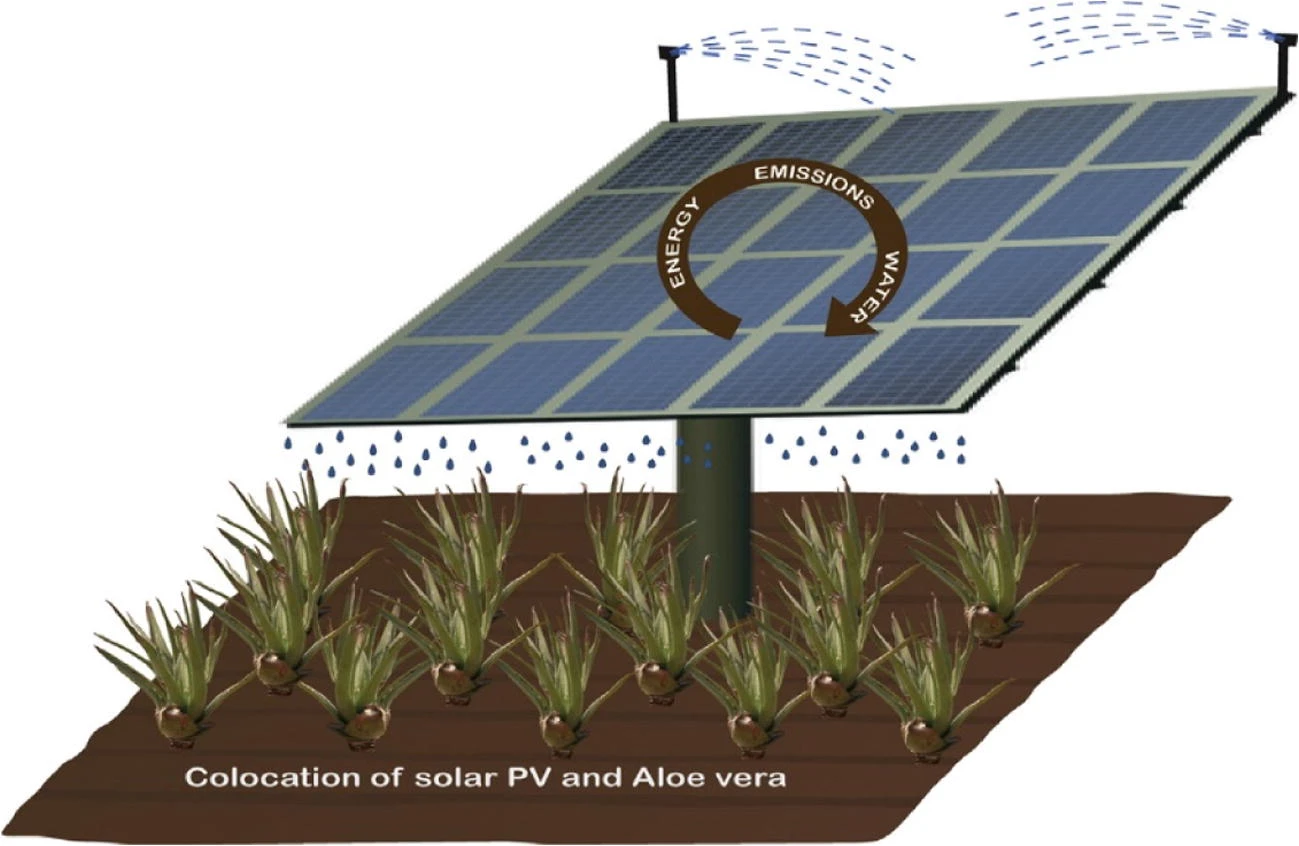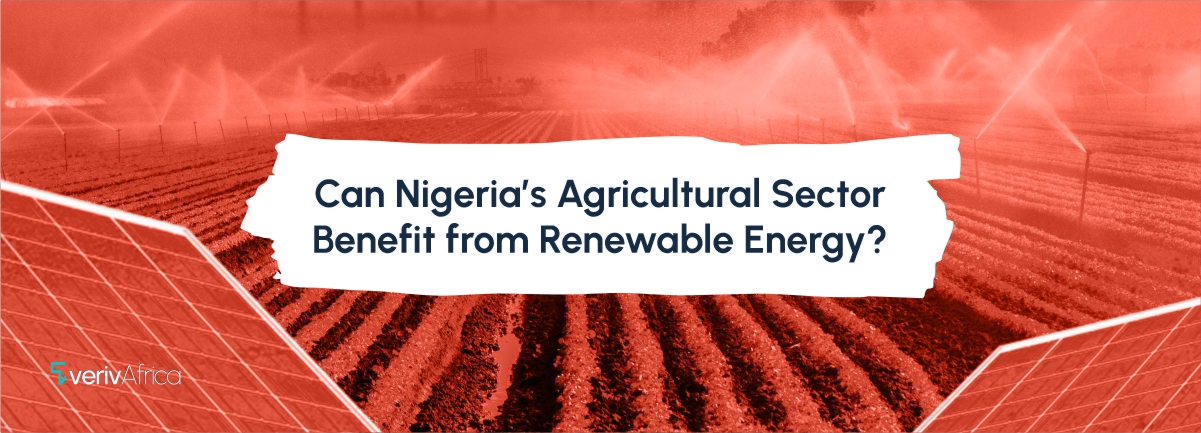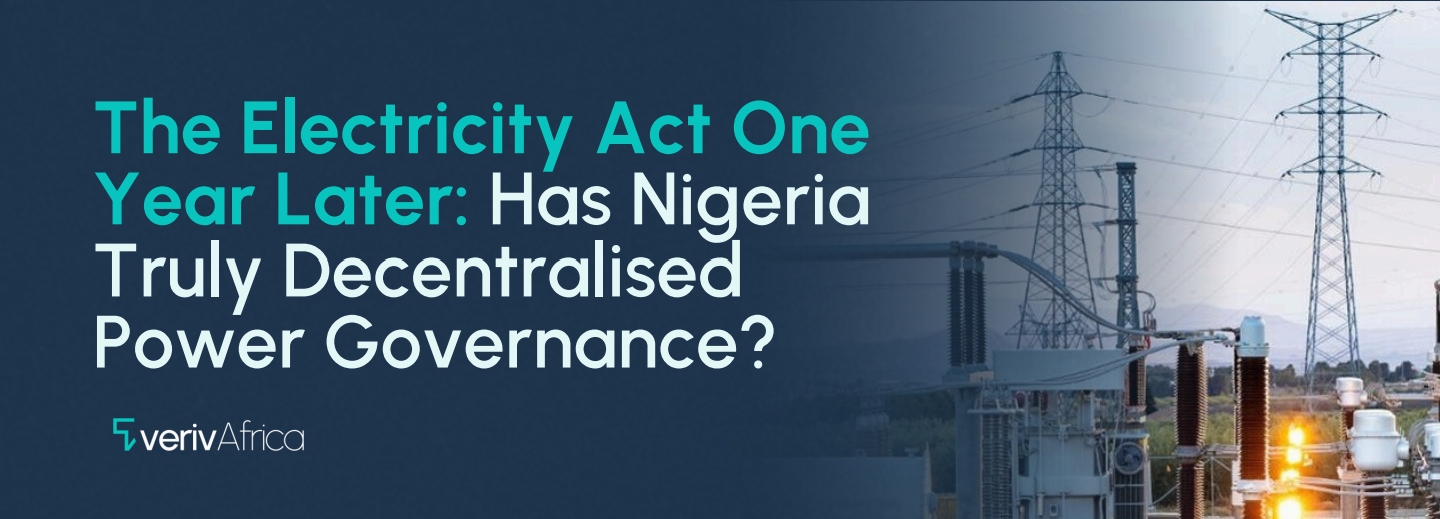Agriculture remains the bedrock of Nigeria’s economy, contributing to over 24% of the country’s gross domestic product (GDP) and employing more than 35% of its workforce. Yet, over 100 million Nigerians are food-insecure. This paradox shows a gap in food production efficiency.
Research has shown that reliable access to electricity enhances agricultural productivity and food system resilience. Energy is required in every stage of the agricultural value chain, from mechanised farming to processing and storage. Therefore, unreliable and insufficient energy access can become a major bottleneck in the entire food supply chain. Decentralised clean energy solutions from solar, biomass, wind, and small-scale hydropower sources can offer a transformative pathway by energising Nigeria’s rural communities, which make up the bulk of the country’s farmer population.
The Role of Energy in the Agricultural Value Chain.
Energy is crucial for food production, processing, and storage; however, access to electricity remains a significant challenge in Nigeria. Over 92 million Nigerians lack access to electricity on the national grid, which has an abysmally low generation capacity, averaging just 4,000 MW. Beyond the electricity generation issue, the national electricity grid suffered 12 collapses in 2024, marking it as unreliable. As a result, many communities remain energy-poor, with smallholder farmers disproportionately affected.
Over 88% of the people in Nigeria’s agricultural sector are smallholder farmers living in rural areas, and more than 67% of the Nigerian rural population have no access to electricity from the grid. These persistent figures have significant implications across the following key areas:
- Irrigation limitation: Over 90% of Nigeria's agricultural production is rain-fed. This reliance on rain-fed farms limits year-round farming, resulting in overall reduced production. To ensure a reliable power supply for irrigation farming, some farmers depend on fossil fuel-powered generators to pump water during the dry season; however, these generators are costly, and since more than 80% of the farmers are subsistence farmers, they cannot afford them. The significant cost of fuel for expensive petrol and diesel generators makes farming less viable. It also makes food unaffordable for Nigerians and reduces profit margins for the farmers.
- Post-Harvest Losses: The country loses an estimated 40–50% of agricultural produce, primarily perishable goods, due to poor handling, inefficient storage systems, and processing facilities. For example, Kano, Jigawa, and Kebbi are three states known for their rice production, but small-scale farmers struggle to operate rice mills due to the high cost of diesel. This challenge causes a financial strain on farmers. In Benue and Kaduna States, where tomatoes are primarily produced, farmers lack adequate storage facilities to maintain the tomatoes in good condition due to a shortage of standard cold storage facilities. The absence of energy-powered facilities contributes to food waste, income loss, and nutritional deficits.
- Mechanisation and Efficiency: Modern agricultural machinery, such as tractors, planters, threshers, and milling machines, requires stable electricity or fuel to operate. Without energy, farmers often resort to using manual and outdated, inefficient machinery.
- Environmental Challenges: Relying on fossil-fuel-powered machines, such as tractors and mills, poses a threat to the environment through greenhouse gas emissions. Opting for greener options will help reduce carbon emissions and contribute to carbon credit programmes. It’s remarkable that we now have electric-powered tractors, which are highly efficient, less noisy, and environmentally friendly.
How Can Renewable Energy Improve the Agricultural Value Chain?
Thousands of years ago, farmers utilised renewable energy forms such as animal draught power, water wheels, windmills, biofuels for heating, and direct solar energy for drying in various agricultural processes. However, the discovery of fossil fuels spurred a shift from traditional agricultural practices to modern, mechanised farming, as the new methods offered greater efficiency, scale, and productivity.
Today, rising environmental concerns and global energy transition have led to the revival of traditional practices in a sustainable manner. In the US, the implementation of renewable energy in agriculture increased by 15% in 2022, with states like California, Texas, Florida, North Carolina, and Arizona leading. Countries across Europe, Asia, and Africa are adopting hybridised and decentralised renewable energy systems to boost agricultural production, enhance rural development, and ensure environmental sustainability. Examples of such projects include India's solar-powered irrigation systems, Kenya's solar-powered cold storage facilities, and Brazil’s bioenergy supply from sugarcane waste. Drawing lessons from these examples, here are the key renewable energy technologies Nigeria can implement and how they can improve the sector’s value chain:
- Solar Energy:
Nigeria has the potential to harness over 427 GW of solar energy, but only around 5000 MW has been utilised so far. Most of the solar PV systems installed are off-grid and standalone. Decentralised solar energy plants can power irrigation facilities and other energy-intensive operations using energy storage batteries. The excess energy generated by solar energy plants can be sold to non-agricultural consumers through net metering, generating an additional stream of income for the farm.
Solar energy can be used in other farming activities such as:
- Utilising solar-powered irrigation pumps to provide water access during the dry season in off-grid areas
- Construction of solar-powered cold rooms and refrigerated trucks to reduce post-harvest spoilage of perishable goods.
- Installing solar drying systems will accelerate the post-harvest drying of grains, vegetables, spices, and even meat, improving quality and shelf life.
- Setting up subsidised solar milling machines in agroprocessing units can cut processing costs for grains and cereals.
- Lighting and Farm Equipment.
The use of agrophotovoltaic (APVs) systems is a groundbreaking technical approach to integrating solar farms with crop production and livestock rearing. This approach enables farmers to utilise solar energy to sustain their crops, reduce production costs, and enhance energy independence. AGV systems are widely adopted in regions like Europe, the United States, and Japan. In countries such as Germany, France, and the United States, government incentives and subsidies have played a crucial role in reducing the cost of deployment. As a result, technologies like APVs are now used on a commercial scale in these markets.

Figure 1: A Conceptual Model of How the APV System Works (Source: Ravi, 2016)
- Wind Energy:
States in northern Nigeria, such as Katsina, Jos, Maiduguri, and Sokoto, possess substantial wind resources suitable for both small-scale and large-scale wind turbines. However, the exploration of wind power in Nigeria has not gained as much attention as solar power. There are only two known existing wind energy technologies in Nigeria: the 10 MW Lambar Rimi wind farm in Katsina and the 500 KW Sayya-Gidan Gada wind power demonstration site in Sokoto. Read more here.
Windmills powered farmhouses centuries ago. This practice can be modified and implemented to provide energy for powering water pumps, livestock irrigation, rural electrification, and agroprocessing units. Wind energy can also complement solar energy through hybrid renewable energy models. The hybridisation of wind plants increases their electricity generation capacity and continuous supply, even when wind speeds are low. Research conducted by Ssenyimba, S. et al. shows how a hybrid wind model can meet the irrigation demand for one acre of banana plantation. Despite the efficiency of wind-PV systems, the model has high initial and maintenance costs, which necessitate government intervention to provide financial incentives that can help reduce the installation cost.
- Biomass Energy:
The energy derived from organic matter, such as plants, animals, and byproducts, is called biomass energy. This form of energy converts chemical energy to heat, electricity, or fuel. Rice husks, crop stalks, peels, and shells, as well as other organic matter from farmland, should be used on a small scale to fulfil farm energy demands.
Every year, Nigeria wastes approximately 190 million tonnes (MT) of both edible and inedible agricultural food, which could meet the country's 2030 electricity target; yet, only 0.05% of the energy generated in Nigeria is organically produced. Notable agribusinesses engaged in biomass energy projects in Nigeria include the Savannah Sugar Company in Numan, ethanol refineries and sorghum farms in both Ondo and Ekiti states, as well as bioethanol production from sugarcane and molasses in the Niger Delta.
The global shift to renewable energy is essential for achieving sustainable agriculture. In Nigeria, where a large proportion of farmers practice subsistence agriculture, affordability remains a significant barrier to adoption. Addressing this challenge will require targeted policy incentives, robust public-private partnerships, and greater collaboration among farming communities. Strategic investment in renewable technologies can help mitigate environmental degradation caused by fossil fuels, while also enhancing crop yields and improving long-term agricultural resilience.
References
AgAmerica. (2024, November 8). The rise of renewable energy in agriculture? AGAmerica. https://agamerica.com/investing-in-agriculture/investor-insights/renewable-energy-in-agriculture/
Africanews. (2023, September 11). Kenya: Solar-powered cold storage helps farmers reduce costly waste. https://www.africanews.com/2023/09/11/kenya-solar-powered-cold-storage-helps-farmers-reduce-costly-waste//
Brite Solar. (2025, February 28). Agrivoltaics Market: Growing demand in renewable energy & agriculture. https://www.britesolar.com/aghora-aghrofotovoltaikwn-auksanomeni-zitisi-stin-ananewsimi-energheia-georghia-en
Coelho, L. M., Junior, E. P. S., Da Silva, C. F. F., De Oliveira, B. H. C., Dantas, J. B. C., Reis, J. V. D., Schramm, V. B., Schramm, F., & Carvalho, M. (2024). Supply of bioelectricity from sugarcane bagasse in Brazil: a space–time analysis. Sustainable Environment Research, 34(1). https://doi.org/10.1186/s42834-024-00223-z
Gray, A. (2025, February 26). John Deere brings electric power to agriculture tractors. Successful Farming. https://www.agriculture.com/john-deere-brings-electric-power-to-agriculture-tractors-11687199#:~:text=The%20John%20Deere%20E%2DPower,battery%20production%20and%20improve%20technology.
National Geographic. (n.d.). Biomass energy. Retrieved June 18, 2025, from https://education.nationalgeographic.org/resource/biomass-energy/
NESG. (n.d.). The Nigerian Economic Summit Group | NESG issues a policy brief on the status of food security in Nigeria. Retrieved June 18, 2025, from https://nesgroup.org/blog/NESG-Issues-a-Policy-Brief-on-the-Status-of-Food-Security-in-Nigeria#:~:text=The%20number%20of%20food%2Dinsecure,strategies%20as%20of%20March%202024.
Newsom, C., International Institute for Environment and Development, European Union, Niger Delta Wetlands Centre, Living Earth Foundation, & Wilson, E. (2012). Renewable energy potential in Nigeria. International Institute for Environment and Development. https://www.iied.org/sites/default/files/pdfs/migrate/G03512.pdf
Punch Newspaper. (2024, October 8). Unbearable post-harvest losses. Punch Newspapers. https://punchng.com/unbearable-post-harvest-losses/
Ravi, S., Macknick, J., Lobell, D., Field, C., Ganesan, K., Jain, R., Elchinger, M., & Stoltenberg, B. (2016). Colocation opportunities for large solar infrastructures and agriculture in drylands. Applied Energy, 165, 383–392. https://doi.org/10.1016/j.apenergy.2015.12.078
Ssenyimba, S., Kiggundu, N., & Banadda, N. (2020). Designing a solar and wind hybrid system for small-scale irrigation: a case study for Kalangala District in Uganda. Energy Sustainability and Society, 10(1). https://doi.org/10.1186/s13705-020-0240-1
Veriv Africa. (n.d.). Wind energy in Nigeria: Feasibility of development and local supply chain. Retrieved June 18, 2025, from https://www.verivafrica.com/insights/wind-energy-in-nigeria-feasibility-of-development-and-local-supply-chain
World Bank. (n.d.). World Bank Open Data. Retrieved June 18, 2025, from https://data.worldbank.org/indicator/EG.ELC.ACCS.RU.ZS?end=2023&locations=NG&start=1990&view=chart










